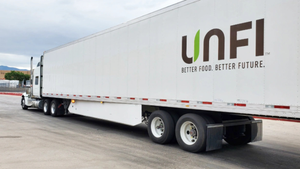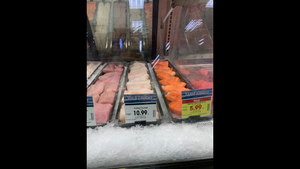Nash Finch Boosts Omaha Share, Posts Q2 Loss
The wholesaler earlier this year made two acquisitions of its wholesale customers operating in Omaha: the 15-store Bag n’ Save and 18 No Frills stores.
MINNEAPOLIS — Nash Finch Co.’s recent store-buying spree in Omaha, Neb., doesn’t herald a full-blown return to retail but instead reflected a unique opportunity to fortify its market share there, officials said last week.
The wholesaler earlier this year made two acquisitions of its wholesale customers operating in Omaha, buying the 15-store Bag n’ Save chain for $29.9 million in March and in May announcing the acquisition of 18 stores under the No Frills banner from U-Save Foods for $47.5 million. No Frills was Nash’s largest wholesale customer.
Alec Covington, chief executive officer of Nash Finch, in a conference call last week said the acquisitions were a matter of fortuitous timing. The Bag n’ Save owners were seeking to retire while No Frills was looking to strengthen its positioning against Wal-Mart. Combining the chains under Nash Finch will create the second-largest grocer to Wal-Mart in the Omaha market, he said.
Related story: Nash Finch Buys 2nd Omaha Chain
“In the case of [Bag n’ Save], it had more to do about a desire to change their lifestyles and move onto the retirement phase of their life. And in the case of No Frills, it had more to do with seeing the opportunity in the marketplace, but not feeling they had the capabilities to accomplish all of that themselves given the magnitude of it.”
Covington’s remarks came while reviewing “challenging” second-quarter financial results affected by increasing competitive pressures and a slowdown in food inflation.
A goodwill writedown of $132 million contributed to a net loss of $85 million in the quarter, which ended June 16, Nash Finch said. Excluding the writedown, which was related to aligning market value to declining stock price, quarterly net earnings decreased 25.6% to $9 million, and adjusted EBITDA totaled $27.8 million or 2.5% of sales compared with $34.4 million or 3.1% of sales in the same period a year ago. Overall sales dipped by 0.6% to $1.1 billion and comparable-store sales were down 1.5%.
'Challenging Quarter'
“It’s fair to say this quarter was slightly more challenging than we hoped,” Covington said during a conference call discussing results. He said escalating competitive pressure in the military sales segment weighed down profits, and distribution margins were adversely affected by a slowdown in food-price inflation.
Covington identified competitor Associated Wholesale Grocers for making a move to affect its military division in the Southwest, and said some product manufacturers were also looking for cheaper alternatives through large bids. Covington characterized the latter concern as a “near-term” issue and said he expected Nash Finch to prevail in the majority of those bids.
More Nash Finch news: Adds Two Family Fresh Stores
The news accompanied a 52-week low trading price for Nash Finch stock. However, one analyst, Ajay Jain of Cantor Fitzgerald, noted that retail comp declines moderated during the quarter. And with investments at an Oklahoma City distribution center complete, the company could get better expense leverage in the coming quarters, he said.
Covington said Nash Finch would exit its agreement to supply 25 Kmart stores later this year. Kmart represents the majority of an estimated $65 million to $68 million in annual wholesale volume the company will exit from beginning late in the third quarter.
“We’ve been supplying supercenters for Kmart since 2003; that business has declined dramatically in each year,” Covington said. “It’s responsible for a lot of the year-over-year declines that we see in food distribution.”
About the Author
You May Also Like








